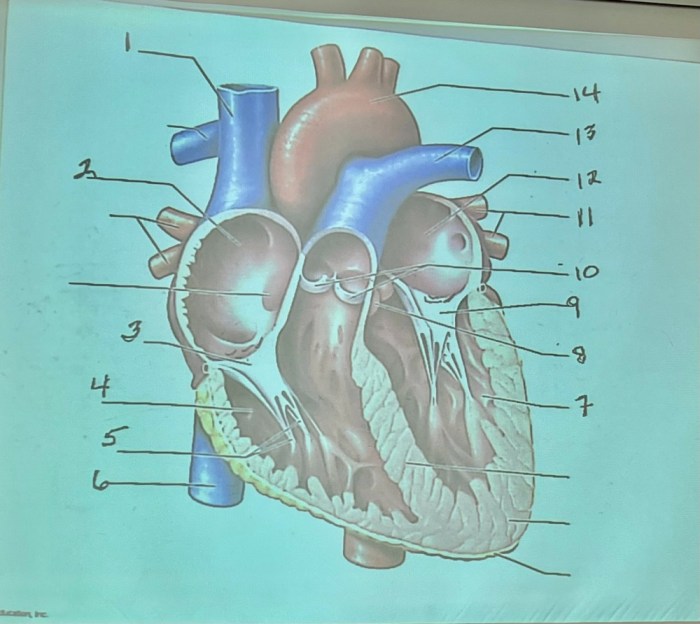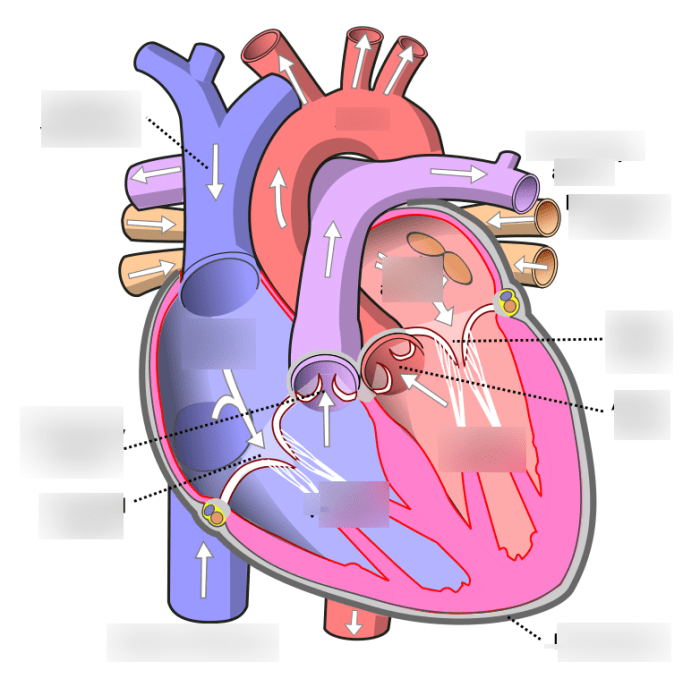Chapter 11 Cardiovascular System Packet embarks on a captivating journey into the intricate world of the cardiovascular system, the lifeblood of our bodies. This comprehensive packet unravels the mysteries of the heart, blood vessels, and blood, illuminating their vital roles in maintaining life and well-being.
Through engaging narratives and in-depth explanations, this packet explores the anatomy and physiology of the heart, the principles of blood flow and pressure regulation, and the mechanisms of cardiovascular regulation. It delves into common cardiovascular disorders, diagnostic tests and procedures, cardiovascular surgery, and the crucial role of pharmacology and nursing in cardiovascular health.
Cardiovascular System Overview: Chapter 11 Cardiovascular System Packet

The cardiovascular system, also known as the circulatory system, is responsible for transporting blood throughout the body. It consists of the heart, blood vessels, and blood.
The heart is a muscular organ that pumps blood through the blood vessels. The blood vessels are a network of tubes that carry blood away from the heart and back to the heart. Blood is a fluid that contains red blood cells, white blood cells, platelets, and plasma.
Types of Blood Vessels
- Arteriescarry blood away from the heart.
- Veinscarry blood back to the heart.
- Capillariesare small blood vessels that connect arteries and veins.
Heart Anatomy and Physiology
Heart Chambers and Valves
The heart has four chambers: two atria (upper chambers) and two ventricles (lower chambers). The atria receive blood from the body and the ventricles pump blood out to the body.
The heart valves prevent blood from flowing backward. The tricuspid valve is located between the right atrium and right ventricle. The pulmonary valve is located between the right ventricle and pulmonary artery. The mitral valve is located between the left atrium and left ventricle.
The aortic valve is located between the left ventricle and aorta.
Cardiac Cycle
The cardiac cycle is the sequence of events that occur during one heartbeat. It consists of two phases: systole and diastole.
- Systoleis the contraction of the heart.
- Diastoleis the relaxation of the heart.
Electrical Conduction System
The electrical conduction system of the heart is a group of specialized cells that generate and conduct electrical impulses that cause the heart to contract.
The sinoatrial node (SA node) is the natural pacemaker of the heart. It generates the electrical impulse that triggers the heart to contract.
Blood Vessels and Circulation

Structure and Function of Blood Vessels
Arteries are thick-walled blood vessels that carry blood away from the heart. They have a strong muscular layer that helps to pump blood through the body.
Veins are thin-walled blood vessels that carry blood back to the heart. They have valves that prevent blood from flowing backward.
Capillaries are small blood vessels that connect arteries and veins. They allow oxygen and nutrients to pass from the blood into the tissues.
Principles of Blood Flow and Pressure Regulation
Blood flow is the movement of blood through the blood vessels. It is determined by the cardiac output and the resistance to blood flow.
Cardiac output is the amount of blood that the heart pumps out per minute. Resistance to blood flow is the opposition to blood flow caused by the friction of blood against the walls of the blood vessels.
Role of the Lymphatic System
The lymphatic system is a network of vessels and nodes that helps to drain excess fluid from the tissues and return it to the blood.
Cardiovascular Regulation

Heart Rate and Blood Pressure Regulation
Heart rate is the number of times the heart beats per minute. It is regulated by the autonomic nervous system and by hormones.
Blood pressure is the force of blood against the walls of the blood vessels. It is regulated by the autonomic nervous system, by hormones, and by the kidneys.
Effects of Exercise and Stress
Exercise and stress can both increase heart rate and blood pressure.
Exercise can also increase the size and strength of the heart, which can improve cardiovascular health.
Cardiovascular Disorders

Common Cardiovascular Disorders, Chapter 11 cardiovascular system packet
- Coronary artery diseaseis a condition in which the arteries that supply blood to the heart become narrowed or blocked.
- Hypertensionis a condition in which blood pressure is abnormally high.
- Heart failureis a condition in which the heart is unable to pump enough blood to meet the body’s needs.
Symptoms, Causes, and Treatment Options
The symptoms, causes, and treatment options for cardiovascular disorders vary depending on the specific disorder.
Importance of Cardiovascular Health and Prevention Strategies
Cardiovascular health is important for overall health and well-being. There are a number of things that people can do to improve their cardiovascular health, including:
- Eating a healthy diet
- Getting regular exercise
- Maintaining a healthy weight
- Not smoking
- Managing stress
FAQ Explained
What is the function of the cardiovascular system?
The cardiovascular system is responsible for transporting oxygen, nutrients, hormones, and other essential substances throughout the body while removing waste products.
What are the major components of the circulatory system?
The major components of the circulatory system include the heart, blood vessels (arteries, veins, and capillaries), and blood.
What are the different types of blood vessels and their roles?
Arteries carry oxygenated blood away from the heart to the body’s tissues, while veins carry deoxygenated blood back to the heart. Capillaries are the smallest blood vessels and facilitate the exchange of substances between the blood and tissues.